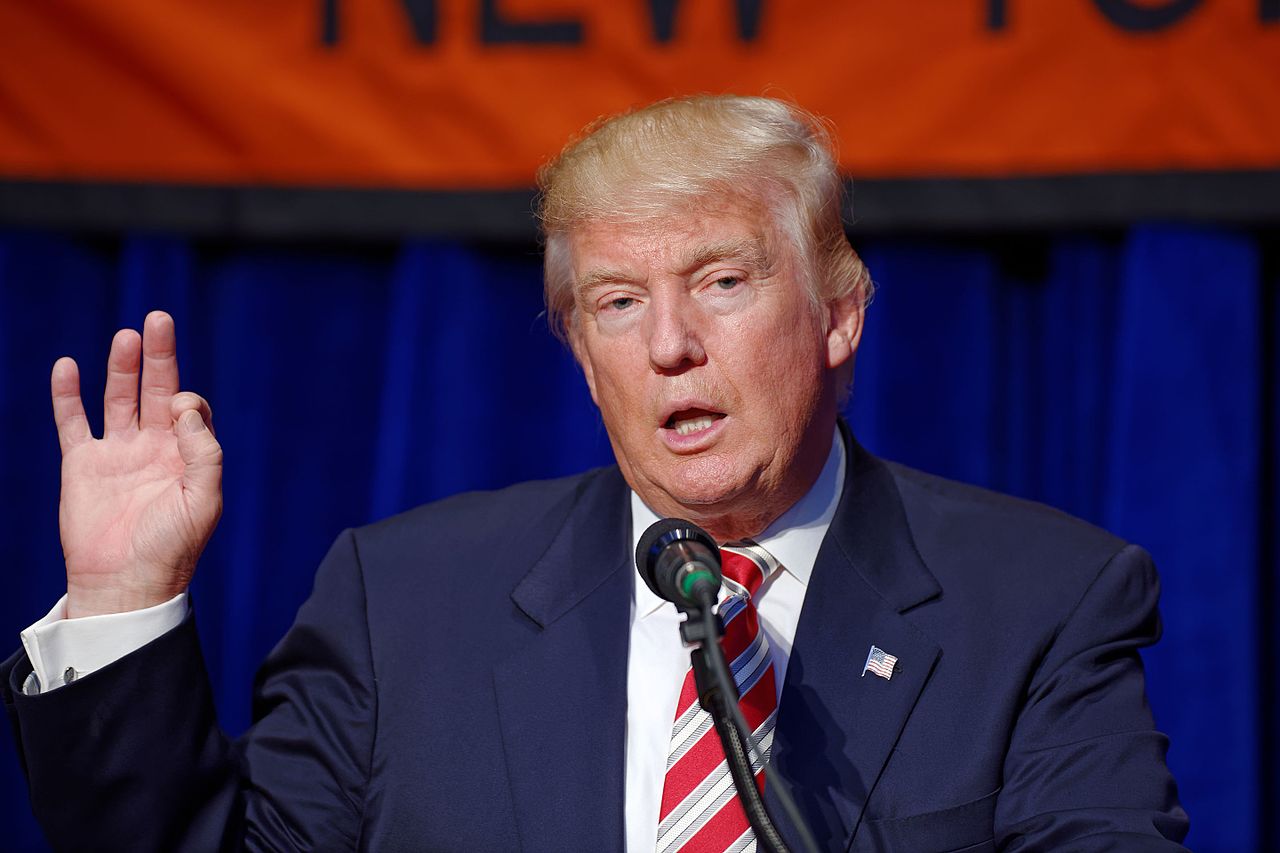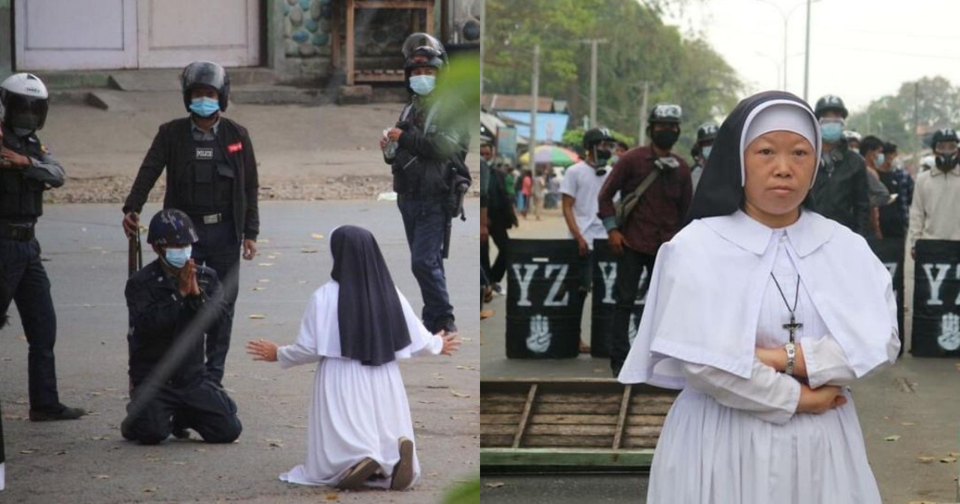Fredrik Reinfeldt had started his 2014 summer campaign speech with sweeping gestures. He paced the stage, enunciating his talking points with the expressive body language of a trained politician. But when he uttered three particular words, which in the eyes of many would seal the fate of his eight-year tenure as Prime Minister of Sweden, he was standing still, gripping the podium with both hands. His voice quivered.
”Open your hearts,” he pleaded to the Swedish people. It was a plea for the patience of the Swedish people as the Reinfeldt government figured out how to accommodate the influx of refugees, mainly from Syria and Afghanistan, which had already doubled from the year before.
The national elections held one month later revealed a deeply fractured political landscape. The Swedish voters were thoroughly unimpressed by Reinfeldt’s speech, which was seen as the last-ditch effort of a desperate incumbent to win the moral high ground. The phrase “open your hearts” became emblematic of the Swedish political establishment’s general bewilderment in face of the refugee crisis.
Although the left-green coalition government, which replaced Reinfeldt’s liberal-conservative coalition government, was victorious, the victory was hard-gained and far from triumphant. Reinfeldt’s nervous plea came against the background of an unprecedented rise of the right-wing party the Sweden Democrats, an anti-immigrant, anti-establishment party that had doubled its support since the previous election. The Sweden Democrats was widely considered the biggest winner of the elections, winning 13 percent of the vote to become the third biggest party. Superficially, it looked like Sweden was moving left, but underneath something else entirely was taking shape.
One Year Later
It was a new year, with a new speech by a new prime minister. “My Sweden builds no walls,” declared Social Democrat Stefan Löfven in September 2015 in a speech at Medborgarplatsen (Citizen’s Square) in Stockholm. When Löfven spoke, he did so considerably more forcefully than Fredrik Reinfeldt had done.
At that point in time, the words resonated with the Swedish public and its image of itself as open, accepting and progressive. When thousands of refugees began to arrive at Stockholm Central Station in the fall of 2015, volunteers gathered by the hundreds under “Refugees Welcome” banners. They provided the refugees with food, blankets and other basic necessities. Calls went out across social media for Arabic and Pashto speakers to help with interpretation. There was a general sentiment of, “we have done it before, so we can do it again.” Sweden had, after all, sheltered many Jews during and after the Second World War, received political activists fleeing from the Chilean military junta in the ‘70s, and accepted and largely integrated refugees fleeing the Balkans in the ‘90s. This time would not be different; the Swedish system might bend, but it would not break.
“During the spring of 2015, Prime Minister Stefan Löfven said that there was no limit to the number of refugees that Sweden could receive,” says Emilie Hillert, a prominent immigration lawyer.
“That was then,” she says dryly.
Closing up
In November 2015, Stefan Löfven’s Sweden finally built a wall, albeit of paper. His government put ID-controls on the border crossing with Denmark, effectively cutting off access across the Öresund Bridge, which had served as the main entrance for refugees into Sweden.
A week later, Deputy Prime Minister and leader of the Green Party Åsa Romson could not fight back her tears at the press conference where she, together with Prime Minister Stefan Löfven, announced the government’s decision to restrict access to permanent residence permits for asylum seekers:
“…during the last few weeks I have become completely convinced that the best way to help my Green Party municipal officials is to take these measures.” – her voice broke, belying her words.
It was obvious that the Social Democrats had been forced to accept that there might actually be a limit to the number of refugees that Swedish municipalities were able to accommodate, and that a radical policy shift was required.
It was equally obvious that its governing partner, the much smaller Green Party, had put up fierce resistance, and been completely run over by the Social Democrats. Romson’s tears represented a tough reality check for the Green Party, which until that moment had pushed hard for open asylum policy. Green voters derided the decision as selling out on core values; the Sweden Democrats criticized it for not being thorough enough.
Emilie Hillert also strongly criticizes the policy change, especially the way in which it was carried out:
“Extreme situations may sometimes require extreme measures. But I am very critical as to how a system that had been built up through careful deliberation for generations was suddenly thrown away,” she said and added that, “these new laws and regulations were hastily put together and have many gaps and space for interpretation. They contribute to neither legal certainty nor a predictable asylum process.”
Overall, Sweden had been more welcoming to foreigners and more open to multiculturalism than most other European nations. Nonetheless, its open and pioneering asylum policy, in place since the ‘70s, was witnessing drastic and very sudden change.
“The government committees tasked with reviewing the new law dedicated all of their resources and worked intensively to give their opinions. Many concerns were voiced and many shortcomings were pointed out. In spite of that, the government pushed through and approved the law,” says Emilie Hillert.
The new regulations were controversial, not only among legal professionals like Hillert. However, they also had many supporters in the broader layers of the population.
“Permanent residence permits? What were they thinking?” asks Sofia, a young woman from a small city in northern Sweden, who prefers to not use her real name. “When you realize how generous we actually are, the idea of asylum status loses its meaning,” she explains.
Sofia is one of many Swedes now reconsidering their opinion on immigration. This reconsideration was reflected in a survey conducted by Swedish Gävle University during the spring and summer of 2016. It showed that Swedes were becoming less positive towards diversity, with only 64 percent of the population in favor, down from 74 percent two years before. Diversity-approving Swedes were still in majority, but the decrease was substantial.
Even Dagens Nyheter, Sweden’s largest liberal newspaper which had been an enthusiastic supporter of the Refugees Welcome-movement, called the new policy a “necessary break.”
At the same time, the Sweden Democrats continued to rise in the polls. Despite – or perhaps because of – the efforts of the other parliamentary parties to keep the right-wing party out of any important political processes and decisions, they were well on their way to becoming Sweden’s second biggest party.
The Sweden Democrats
Any discussion about immigration or asylum policy in Sweden will quickly turn to the role of the Sweden Democrats. As of yet, no political party has initiated any kind of formal or systematic cooperation with the Sweden Democrats; the mere suggestion of doing so was enough to get Anna Kinberg Batra – Fredrik Reinfeldt’s successor as leader of the Moderate Party – fired.
Despite being left out in the political cold, the the Sweden Democrats is the political party that has had the deepest impression on Swedish domestic politics in the last decade. The party, which has its roots in fringe neo-nazi movements of the ‘90s, has moved through Sweden’s rural countryside, and continued into the middle-class suburbs of larger cities. It has managed to successfully clean up its image and capitalize on what it perceives to be its role as a truth-speaking, anti-establishment outsider.
Its hardline anti-immigration stance once repelled voters, but the party became seen as the only alternative for voters who want to see less immigration, and so those voters reluctantly give their support. The result has been a steady stream of voters from both of the two former giants of Swedish politics, the Social Democrats on the left, and the Moderate Party on the right.
The Sweden Democrats have set the tone for the immigration debate, which has made it difficult for the seven establishment parties to clearly communicate their own immigration policies. If one of the seven puts forward an immigration-related bill or policy stance, the first question asked – explicitly or implicitly – is always “How does it compare to the Sweden Democrats’ position?”
By attempting to formulate immigration policies that bring voters away from the Sweden Democrats and back into their fold, the establishment parties keep pushing political discourse towards the right. In a way, this strategy seems to be working. Recent poll numbers from December suggest that the most acute stream of voters to the Sweden Democrats has subsided, and even begun to reverse. But for the establishment parties, this is happening at the cost of a great shift in political discourse. The trend shows how the Sweden Democrats have successfully managed to leverage their position as a political underdog to move the central political debate into their own political territory.
The Crisis of Conscience
Since 2015, the number of refugees arriving in Sweden has decreased, but attitudes against refugees have steadily turned more negative. Swedes are generally very open to the idea of welcoming people of other cultures, but when it comes to actually bringing the newcomers into the fabric of society, the response is more tepid. The crisis of 2015 has passed, but the hard task has only just begun.
Part of the problem is that Swedes and newcomers rarely mingle in their daily lives. There is a gulf between Swedes and asylum seekers, giving suspicion space to breed.
In April 2017, a man who had been denied residence and was wanted for deportation by the Swedish Immigration Agency, drove a truck down a busy pedestrian road, killing five people. The man claimed to have acted in the name of the Islamic State, and the event marked the first time that Sweden was hit by extremist terrorism. From the right, many who had argued for stricter immigration controls felt vindicated. The attack also heightened the national security side of the immigration debate.
Yet, compared to other European nations, Sweden has been relatively spared from such trauma. The day to day issues that Swedish municipalities across the country are grappling with are more mundane, but the implications reach deep into the roots of the Swedish welfare state. Refugees have been provided with housing and social benefits by the government, an arrangement which many Swedes view as freeloading and unfair use of their taxes.
“It feels completely meaningless to pay taxes in order to finance people who just abuse Sweden,” says Sofia whose boyfriend immigrated to Sweden as a student. He is now working in the country but may be facing deportation because of a clerical error by the Swedish Immigration Agency.
Sofia feels that asylum seekers have it easy by comparison, “It is frustrating that people who contribute are kicked out while people who abuse the system get housing, education, welfare and employment assistance.”
She says that she used to be more positive about accepting refugees, but her personal frustration with the system has prompted a change of heart. She emphasizes that this should not, however, be mistaken for a “closing of heart.” She believes that asylum seekers with legitimate reasons should absolutely be provided for, but that expressing that opinion with those words is difficult. She says this is because Swedish media labels anyone who is not unconditionally open to refugees as racist. This is disconcerting to her. Sofia says that she resents being grouped together with fringe extremists who have instigated violence against refugees and even set fire to their homes.
The reasons for Sofia’s disapproval of Swedish asylum, immigration and integration policies may be personal, but the sentiments she expresses are shared by many. There is, on the one hand, an honest desire among Swedes to assist those in need, but on the other, there is clear awareness of the practical limitations of the situation. Reconciling these two conflicting notions has caused a crisis of conscience that resonates, and will continue to resonate, across every layer of Swedish society.
Three Years Later
Three and a half years after Fredrik Reinfeldt’s speech, and two years after Stefan Löfven’s government upturned the immigration law, lawyer Emilie Hillert reflects on the implications of the last few years.
“This is the story of how Sweden in just a few years went from one of the most open countries, with a generous asylum policy, to becoming one of the most restrictive ones. Unfortunately, all signs point towards this situation becoming permanent,” she says.
But will it?
In the fall of 2017, on the very same square where Prime Minister Stefan Löfven proclaimed that Sweden does not build walls, a hundred Afghani asylum seekers staged a sit-in protest. The Swedish government had begun to deport those Afghanis who were considered to not have valid reasons for obtaining asylum. Many Swedes joined the protest, and just as in 2015 people showed up in support of an open asylum policy.
But this time, on the far side of a row of policemen, there were also counter-protestors. They waved Swedish flags and shouted at Afghanis to leave the square and leave Sweden.
In answer, the supporters of the Afghani asylum seekers waved their own Swedish flags and held up posters on which they had printed big red hearts.
- The Decade of Acceleration - December 31, 2019
- Episode 6: Moving Cities – Indonesia moves its capital - October 8, 2019
- China turns 70 and asks: “Maybe I’m getting too old for this?” - September 27, 2019






